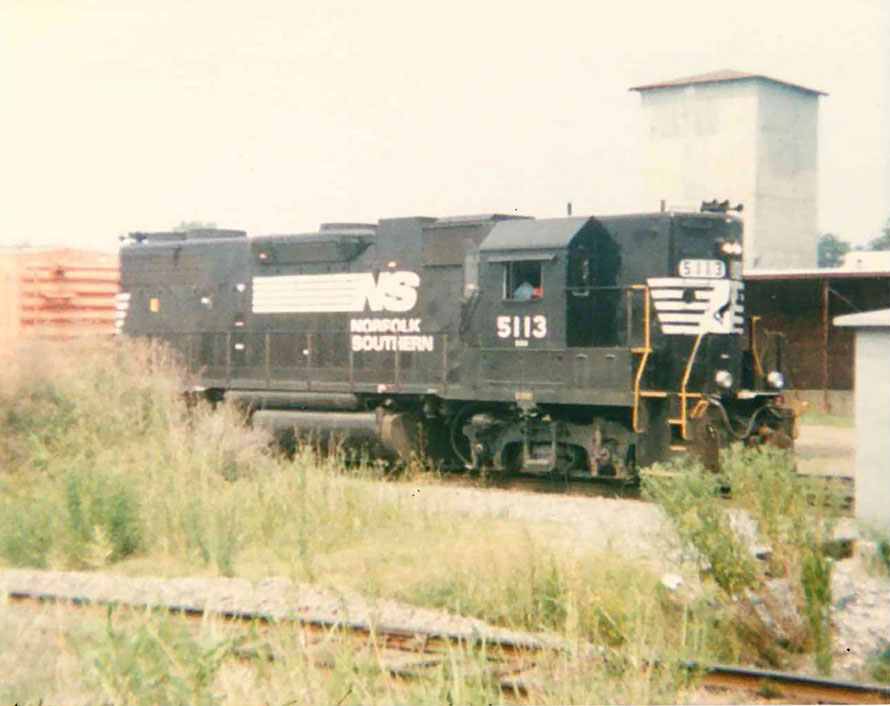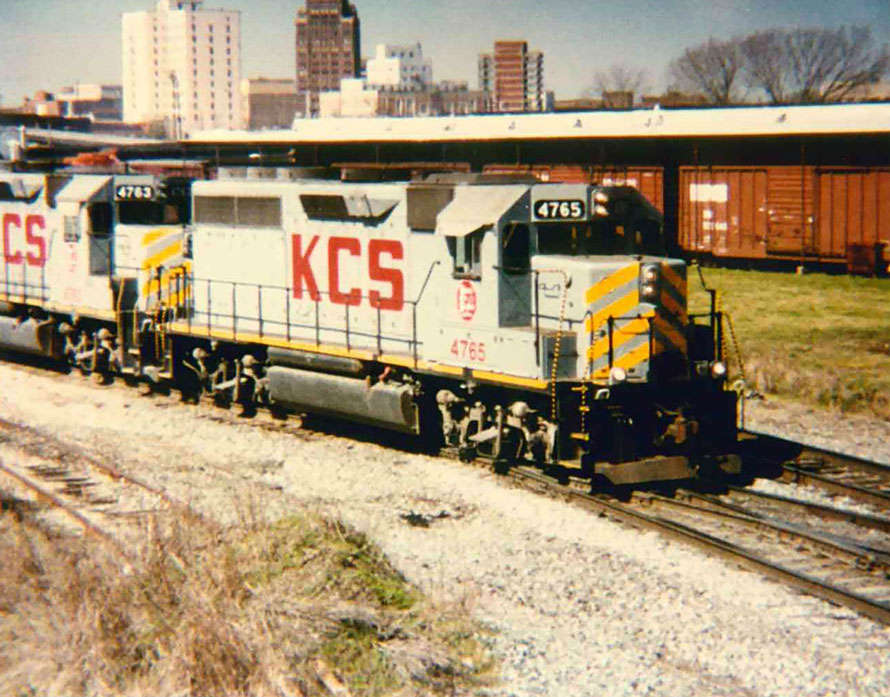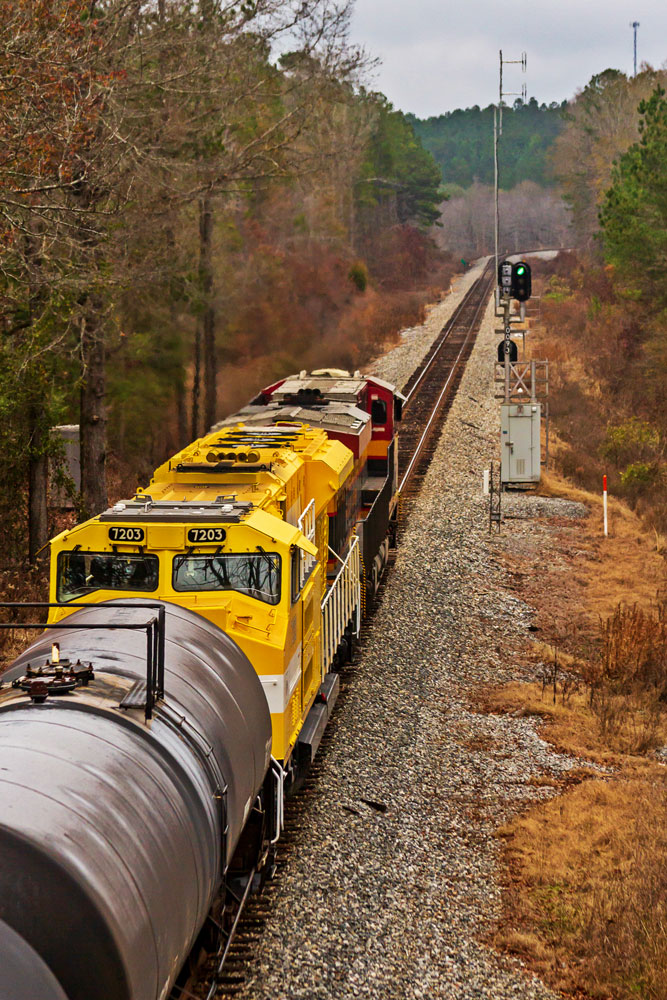
As an adult, I often look back at some of the things I have been told throughout my life. We often overlook the things we are told as youngsters, but as we age, we look back at some of these statements and realize what they mean. More often than not, it is too late to take action and we end up having some form of regret. This applies to us in the railfan community just like it does to anything else.
All of my mentors growing up in the railroad photography community told me the same statement at one time or another. That statement was, “Shoot it while you can, because it may not be here tomorrow.” As a young kid and even into my teenage years, I simply nodded and moved on not taking that statement to heart and letting the facts sink in. Growing up here in Mississippi along the Norfolk Southern mainline, highhood units were in abundance. Every train had them and at the time, we all thought they were here to stay. Fast forward a good fifteen to twenty years and those same high hood units were getting their noses chopped for the then new Admiral Cabs that NS was installing. It was then that a lot of railfans regretted not shooting those high hoods.

Another example was KCSs fleet of Geeps and SD40s. In the early 1990s KCS began buying rebuilt GP40s, dubbing them GP40-3s. They also purchased a handful of SD45 carbody units from various railroads and had them rebuilt into SD40-3s. They were painted in the standard grey scheme, but they all were equipped with the iconic Pyle GyraLite in their noses, something most other railroads had rid themselves of many years ago. My uncle shot every one he came across. Why? Because he knew eventually those lights would be gone and plated over. They were maintenance intensive, but looked sharp. They were a part of KCS’s image at that time. Like the high noses of NS, KCS began removing the GyraLite’s from those units in the early 2000s as they were not an FRA requirement and simple ditch lights required virtually zero maintenance other than fresh bulbs. Thus bringing another fixture on a class one railroad to a close.
As railfans, it’s our job to document what we see today for tomorrow. What I mean by that is, even though just about every train today has a pair of GE ES44s on the point, document it. They won’t be around forever. We all hated the Dash 9s when they came out. Every railroad had them and every train had them. Now, they too, are slowly becoming the victims of progress, being rebuilt into AC44C6Ms and other variants. Granted, these are subtle changes, but they’re still changes. One day we will be next to a younger railfan talking about the once high tech Dash 9s and Evolution Series units and will have to show and tell them what we saw.
The days of sitting trackside and watching a trio of high nosed SD40-2s pulling a pig train are over.

The moral of the story goes back to the title. Shoot it while you can because one day it will be gone. The days of sitting trackside and watching a trio of high nosed SD40-2s pulling a pig train are over, having been replaced by newer high horse power safety cab units. So whether you’re into railfan photography for scenic views, roster shots, or even shooting videos, shoot it while you can. One day you’ll be trackside thinking about all of the times you didn’t shoot something, while a mixed freight rolls past with the newest SD70ACe-T4 in the consist. Once you break it down, it really makes you miss the old stuff.
Dylan Jones – Photographs and text Copyright 2020
“As railfans, it’s our job to document what we see today for tomorrow.” Great words and I agree wholeheartedly. The routine consists today became rare tomorrow.
Indeed, take a photo of it right now – don’t wait until tomorrow or figure you can come back later and get it. As Carly Simon sings in her song “Anticipation”: “These ARE the good old days”. Really liked your KCS photo, Dylan.
Great article Dylan, and words every rail fan should take to heart and include as a part of their hobby ‘credo’ I agree with ‘Traingeek’ …while it give is pleasure for the individual to photograph the rails of our times, whether we realize it or not, we’re also archivists for a future we have no way of knowing what will be. With the new digital cameras, we can take hundreds, thousands of photos that can be easily stored. My own little digital camera I bought at Walmart 15 years ago just died after taking tens of thousands of photos of all kinds.
From my own personal experience, as a teen I thought the Maine Central with its colorful locomotives would go on forever, and took so much for granted. After going to college and then shipping out, I returned to find the MEC part of the Guilford system. Still did’t have the presence of mind to take advantage of and photograph the ‘mish-mash’ of colors and power that was early Guilford, and now it’s all gone.
Yep, the old phillisopher was right….’Seize the day’, and may I add ….’and take lots of photos!’
Again…great article and pix!
It’s so easy to end up bound by nostalgia and forget that, in a moment, now becomes before. When I was starting out trackside I prioritized my experiences and what I felt was important based on what we were losing. I failed to get to know the railroad that was in front of me.
As historians we owe it to the future to document as much as we can. As railfans we owe it to ourselves to invest in a relationship with the railroad we have instead of exchanging it for a romantic interest in a railroad scene that’s just departed.
All that aside, it seems we probably all have these specific examples of what we missed out on. For me, it seems to be CN’s M420’s. They were ‘everywhere’ when I was younger but they weren’t real MLW’s like perhaps the RS18 fleet so I regarded them in an almost derogatory way. It’s a pity that in that myopia I never provided myself a chance to discover something that was there; because it’s gone now. I think of those M420’s now as I return trackside to receive the railroad I have now but might not tomorrow.
Chris
The rise of the Internet and social media has assured that MANY more people have decided to come out to trackside to document the railroad scene — so while I agree with you, Dylan, that SOMEONE should document every passing thing, not every fan has to: I feel confident that plenty of people will spend this very day (a gray winter Saturday) photographing along the former Pennsy Middle Division, and certainly plenty of them documented the passing of the CPL signals on that route last year: MANY of their photos passed by me on my Facebook feed. So _I_ do not need to have images of C44s ad CPLs on my hard drive; other people have that covered.
But I would say this: PHOTOGRAPH THE PEOPLE. Railroad employment nationwide has dropped below 200,000 for the first time since probably 1860 — yes, a century and a half, during which railroad employment peaked at 2 million (and that does not count the people who worked for Western Union or Baldwin or in all of the other ancillary industries that the railroads spawned and supported). Some other fan will catch the Erie heritage unit passing through your town, but once the local branchline freight leaves for the last time, you will never have another opportunity to photograph the conductor hanging off the side of the covered hopper at the feed mill. Make sure you get that conductor’s name and contact info too, and send him a copy; you will have made a friend who will remember you forever.
I can relate in the sense that though I was not taking photos, I saved memories. When I was pre-teen to teen we visited relatives in Davenport, NE on the UP Marysville Sub. In the lated 1960’s to early 1970’s I saw lots of UP high hood GP7’s and GP9’s including the cabless booster units. Most memorable were the “big” units, a parade of U50 B+B’s, U50C’s, DD35’s. All pretty heady stuff for a young me, now those units are museum pieces or distant memories. If not photos, take note of what you see now.